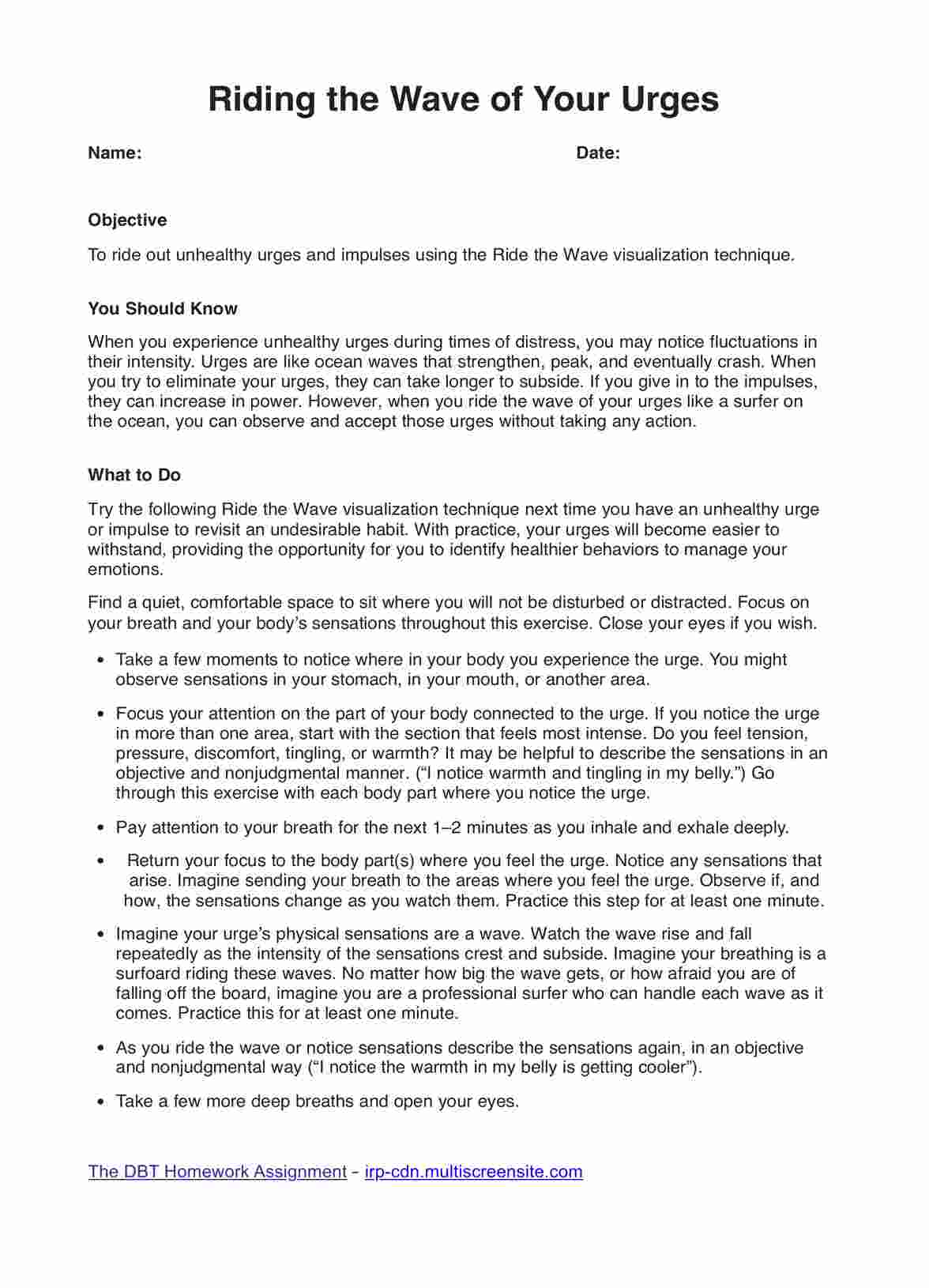Yes, Carepatron offers customizable DBT worksheets to cater to individual therapeutic needs. You can easily modify them according to the specific requirements of your clients.

Riding the Wave of Your Urges DBT Worksheet
Dive into the nuances of DBT and access our exclusive "Riding the Wave of Your Urges" DBT worksheet & learn its transformative benefits!
Use Template
Riding the Wave of Your Urges DBT Worksheet Template
Commonly asked questions
Carepatron prioritizes user security, utilizing high-end encryption and security protocols. Rest assured; all your data and therapy sessions are safe and confidential.
Absolutely! Carepatron is designed to cater to individual and group therapy sessions, ensuring versatility and efficiency in all settings.
EHR and practice management software
Get started for free
*No credit card required
Free
$0/usd
Unlimited clients
Telehealth
1GB of storage
Client portal text
Automated billing and online payments











